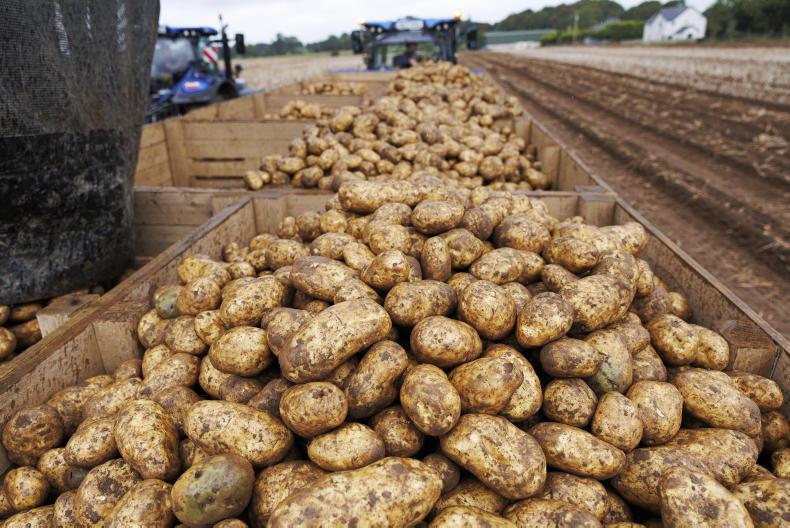With around 20% of greenhouse gas (GHG) emissions from NI farming due to nitrous oxide released when chemical fertiliser is spread, grass clover swards will have an increasingly important role to play on farms, AgriSearch general manager Jason Rankin has said.
In his concluding remarks at a joint webinar organised by AFBI, AgriSearch and the UFU on Tuesday, Rankin acknowledged clover requires higher levels of management and it will take time to transition from grass-only systems, but there are clear benefits to be realised.
Those benefits were outlined by AFBI researcher Dr David Patterson, who referred to previous research at Hillsborough involving steers on grass clover swards which received just 50kg N/ha over the season. The animals produced 90% of the carcass gain per hectare of steers on paddocks that received 220kg N/ha.
Other work from 2009 involving dairy origin beef, identified that animals on grass clover swards had a 19% reduction in carbon footprint compared to cattle grazing swards which received 150kg N/ha.
“More recent publications from Teagasc and UCD show similar levels of carbon reduction,” said Patterson.
Plots
He also highlighted the first year of results coming from new grass clover plots (receiving 67.5kg N/ha) set up alongside the traditional grass check plots which get high levels of N (270kg N/ha).
While the first year data should be treated with caution, especially given that grass clover plots were cut every four weeks, compared to every three weeks in the grass-only scenario, the grass clover plots consistently outperformed their counterparts from early June onwards. In total, an extra 2.6t dry matter (DM)/ha was grown.
“It shows great promise and potential for clover and the benefits we can harness from that,” said Patterson.
MSS
Going beyond grass and clover, a number of farmers, especially on dry land, are now incorporating the likes of plantain and chicory into a multispecies sward (MSS).
AFBI research in 2020 and 2021 showed higher weight gains in calves on MSS versus grass clover, while there are also potential benefits in terms of biodiversity and soil health, said Patterson. However, he acknowledged there is a need to improve persistency of these swards and work to be done on how to mitigate against bloat in cattle and an influx of weeds.
Agroforestry
Patterson also believes there is potentially a place for agroforestry on farms given that it can sequester over twice the carbon of a traditional grass sward.
In addition, incorporating lines of trees into fields would allow farmers to extend the grazing season and be more resilient to wet conditions. “It could be your go to field – almost like an outdoor shed,” said Patterson.
Read more
New sustainability payment for Lakeland suppliers
Lower GHG emissions and higher profit with clover
With around 20% of greenhouse gas (GHG) emissions from NI farming due to nitrous oxide released when chemical fertiliser is spread, grass clover swards will have an increasingly important role to play on farms, AgriSearch general manager Jason Rankin has said.
In his concluding remarks at a joint webinar organised by AFBI, AgriSearch and the UFU on Tuesday, Rankin acknowledged clover requires higher levels of management and it will take time to transition from grass-only systems, but there are clear benefits to be realised.
Those benefits were outlined by AFBI researcher Dr David Patterson, who referred to previous research at Hillsborough involving steers on grass clover swards which received just 50kg N/ha over the season. The animals produced 90% of the carcass gain per hectare of steers on paddocks that received 220kg N/ha.
Other work from 2009 involving dairy origin beef, identified that animals on grass clover swards had a 19% reduction in carbon footprint compared to cattle grazing swards which received 150kg N/ha.
“More recent publications from Teagasc and UCD show similar levels of carbon reduction,” said Patterson.
Plots
He also highlighted the first year of results coming from new grass clover plots (receiving 67.5kg N/ha) set up alongside the traditional grass check plots which get high levels of N (270kg N/ha).
While the first year data should be treated with caution, especially given that grass clover plots were cut every four weeks, compared to every three weeks in the grass-only scenario, the grass clover plots consistently outperformed their counterparts from early June onwards. In total, an extra 2.6t dry matter (DM)/ha was grown.
“It shows great promise and potential for clover and the benefits we can harness from that,” said Patterson.
MSS
Going beyond grass and clover, a number of farmers, especially on dry land, are now incorporating the likes of plantain and chicory into a multispecies sward (MSS).
AFBI research in 2020 and 2021 showed higher weight gains in calves on MSS versus grass clover, while there are also potential benefits in terms of biodiversity and soil health, said Patterson. However, he acknowledged there is a need to improve persistency of these swards and work to be done on how to mitigate against bloat in cattle and an influx of weeds.
Agroforestry
Patterson also believes there is potentially a place for agroforestry on farms given that it can sequester over twice the carbon of a traditional grass sward.
In addition, incorporating lines of trees into fields would allow farmers to extend the grazing season and be more resilient to wet conditions. “It could be your go to field – almost like an outdoor shed,” said Patterson.
Read more
New sustainability payment for Lakeland suppliers
Lower GHG emissions and higher profit with clover









SHARING OPTIONS